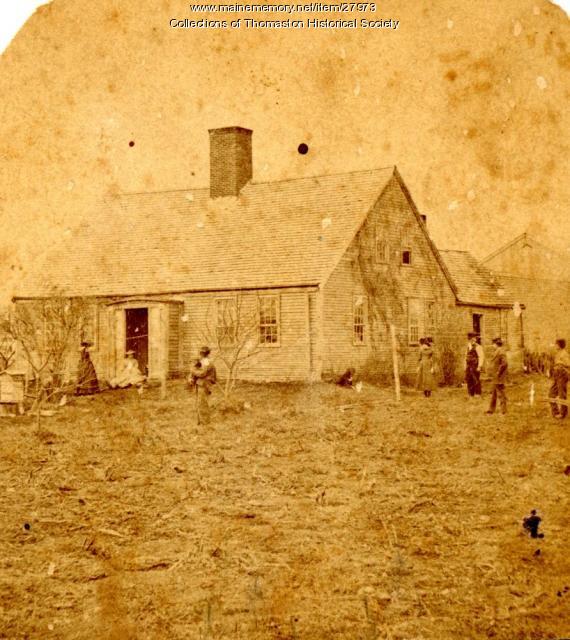Keywords: Thomaston carpenter
Item 26619
Monk House, Thomaston, ca. 1940
Contributed by: Thomaston Historical Society Date: circa 1940 Location: Thomaston Media: Photographic print
Item 26630
The Swett House, Thomaston, ca. 1900
Contributed by: Thomaston Historical Society Date: circa 1900 Location: Thomaston Media: Photographic print
Exhibit
Promoting Rockland Through a Stereopticon, 1875
Frank Crockett and photographer J.P. Armbrust took stereo views of Rockland's downtown, industry, and notable homes in the 1870s as a way to promote tourism to the town.
Exhibit
Paper has shaped Maine's economy, molded individual and community identities, and impacted the environment throughout Maine. When Hugh Chisholm opened the Otis Falls Pulp Company in Jay in 1888, the mill was one of the most modern paper-making facilities in the country, and was connected to national and global markets. For the next century, Maine was an international leader in the manufacture of pulp and paper.
Site Page
Thomaston: The Town that Went to Sea - Architect James Overlock
"… Waldoboro in 1836, and apprenticed as a ship’s carpenter and house joiner with Robert Cushing. When Cushing died in 1840, Overlock, after building…"
Site Page
Thomaston: The Town that Went to Sea - Atticus: A Fugitive Slave
"History of Thomaston, Rockland, and South Thomaston, Maine. Hallowell: Masters, Smith &Co., Printers, 1865."








